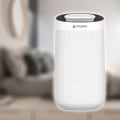Moisture in air conditioning ducts can cause a variety of problems, from mold and mildew growth to the spread of allergens. Checking for moisture in air conditioning ducts is an important part of any mold inspection service or moisture meter test. Without proper testing, it can be difficult to detect when there is an issue with the air conditioning system. In this article, we will provide an overview of the importance of checking for moisture in air conditioning ducts, as well as how to do it properly.
Checking for Moisture in Air Conditioning Ducts
is an important part of keeping your home or office healthy.It is important to use a moisture meter to measure the amount of moisture in the air, which can indicate the presence of mold or mildew. Additionally, it is important to inspect the ducts visually for signs of water damage, such as discoloration or peeling paint. If any water damage is present, it is important to take steps to repair it immediately. In addition to using a moisture meter, it is also important to conduct regular inspections of the ducts.
This can help identify any potential problems before they become serious. During these inspections, look for signs of water damage or mold growth, as well as any areas that may be difficult to access. Once you have checked the ducts for moisture and identified any potential problems, it is important to take steps to prevent mold from growing. These steps include keeping the temperature of the air conditioning system at an optimal level, regularly changing filters, and cleaning the ducts on a regular basis.
Additionally, if you find any water damage or mold growth in the ducts, it is important to have them professionally cleaned and repaired as soon as possible. It is also important to check the air filters in your air conditioning system regularly. If they become clogged with dirt and dust, they can block air flow and cause mold growth. It is also a good idea to have your air conditioning system serviced annually by a professional to ensure that all components are in good condition and functioning properly. Finally, it is important to address any water damage or mold growth in your air conditioning ducts as soon as possible. If left untreated, these conditions can lead to health problems for those living or working in the space.
By taking proactive steps to check for moisture and address any issues that are found, you can help keep your home or office healthy.
Preventing Mold Buildup
In addition to conducting regular inspections of the ducts and using a moisture meter, there are other steps that can be taken to help prevent mold buildup in air conditioning ducts. These include keeping the temperature of the air conditioning system at an optimal level, regularly changing filters, and cleaning the ducts on a regular basis. To ensure proper temperature control, an HVAC contractor should be consulted to adjust the system and make sure all components are in working order. Regular filter changes can be done either by a professional or by the homeowner.Cleaning the ducts is best left to a professional, as this is a more difficult task. Taking these steps can help maintain a healthy air conditioning system, and reduce the risk of mold buildup in air conditioning ducts.
Types of Moisture Meter Tests
When checking for moisture in air conditioning ducts, there are several types of moisture meter tests that can be used. These tests measure different levels of humidity and can help identify any potential problems with the system. Common moisture meter tests include RH testing, dew point testing, and psychrometric testing. RH testing, or relative humidity testing, measures the amount of water vapor in a given space. This test is important for determining the level of moisture in the air conditioning ducts.RH testing is often used in combination with other tests to provide a more accurate picture of the moisture levels. Dew point testing measures the temperature at which water vapor will condense into liquid. This test is important for determining the amount of moisture in the air, as well as the likelihood of mold growth. Dew point testing can help identify areas where mold may be present. Psychrometric testing measures the rate at which water vapor is removed from the air. This test is useful for determining the efficiency of the air conditioning system and any potential problems with its operation.
Psychrometric testing can also be used to determine if there is an excessive amount of moisture in the system. By performing these different types of moisture meter tests, homeowners and businesses can identify any potential problems with their air conditioning systems and take steps to ensure their homes and offices remain healthy and mold-free. Checking for moisture in air conditioning ducts is an important step in creating a healthy environment. Moisture meter tests are an effective way to identify any issues with the moisture levels in the ducts. Additionally, keeping the temperature of the air conditioning system at an optimal level, regularly changing filters, and cleaning the ducts on a regular basis can help keep mold buildup at bay. By following these simple steps, you can ensure that your home or office remains a safe and healthy place.







